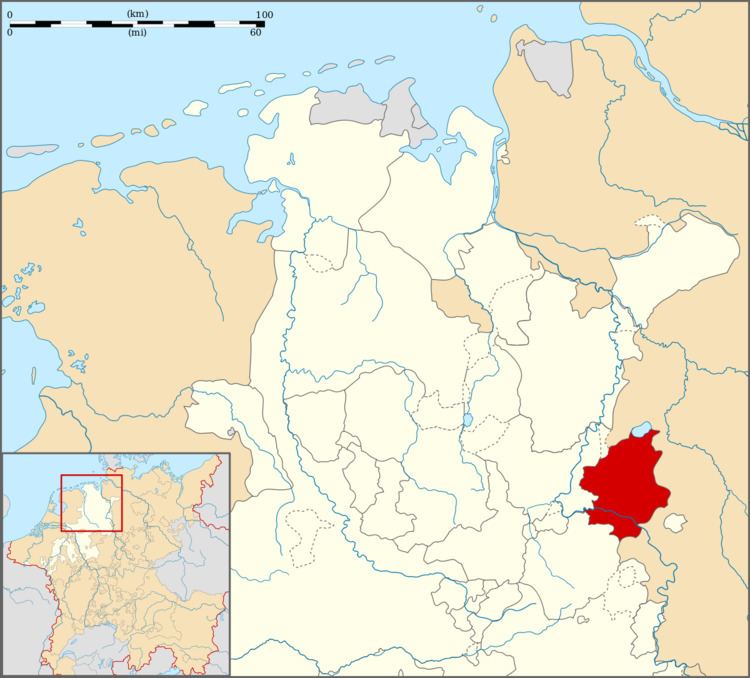Government Principality Established 1110 Founded 1110 | Preceded by Succeeded by Date dissolved 1640 | |
 | ||
The County of Schaumburg (German: Grafschaft Schaumburg), until ca. 1485 known as Schauenburg, was a state of the Holy Roman Empire, located in the present German state of Lower Saxony. Its territory was more or less congruent with the present district Landkreis Schaumburg.
Contents
History
Schaumburg originated as a medieval county, which was founded at the beginning of the 12th century. It was named after Schauenburg Castle, near Rinteln on the Weser, where the owners started calling themselves Lords (from 1295 Counts) of Schauenburg. Adolf I probably became the first Lord of Schauenburg in 1106.
In 1110, Adolf I, Lord of Schauenburg was appointed by Lothair, Duke of Saxony to hold Holstein and Stormarn, including Hamburg, as fiefs. Subsequently, the House of Schaumburg were also counts of Holstein and its partitions Holstein-Itzehoe, Holstein-Kiel, Holstein-Pinneberg (till 1640), Holstein-Plön, Holstein-Segeberg and Holstein-Rendsburg (till 1460) and through the latter at times also the dukes of Schleswig.
Count Adolf IV was an active ruler and founded the cities of Stadthagen and Rinteln.
From 1500 the County of Schaumburg belonged to the Lower Rhenish-Westphalian Circle of the Holy Roman Empire.
After the childless death in 1640 of Count Otto V, the House of Schaumburg became extinct. The County of Holstein-Pinneberg was merged with the Duchy of Holstein. The County of Schaumburg proper was partitioned among the agnatic Schaumburg heirs into three parts, one incorporated into the ducal Brunswick and Lunenburgian Principality of Lüneburg, the largest portion becoming the County of Schaumburg-Lippe, and the eastern territory continuing the name County of Schaumburg (Grafschaft Schaumburg hessischen Anteils), ruled in personal union by Hesse-Cassel. All three are now part of the state of Lower Saxony.
When the District of Schaumburg (Landkreis Schaumburg) was formed in middle Lower Saxony in 1977, it chose to use a coat of arms derived from the ancient arms of the Counts of Schaumberg.
